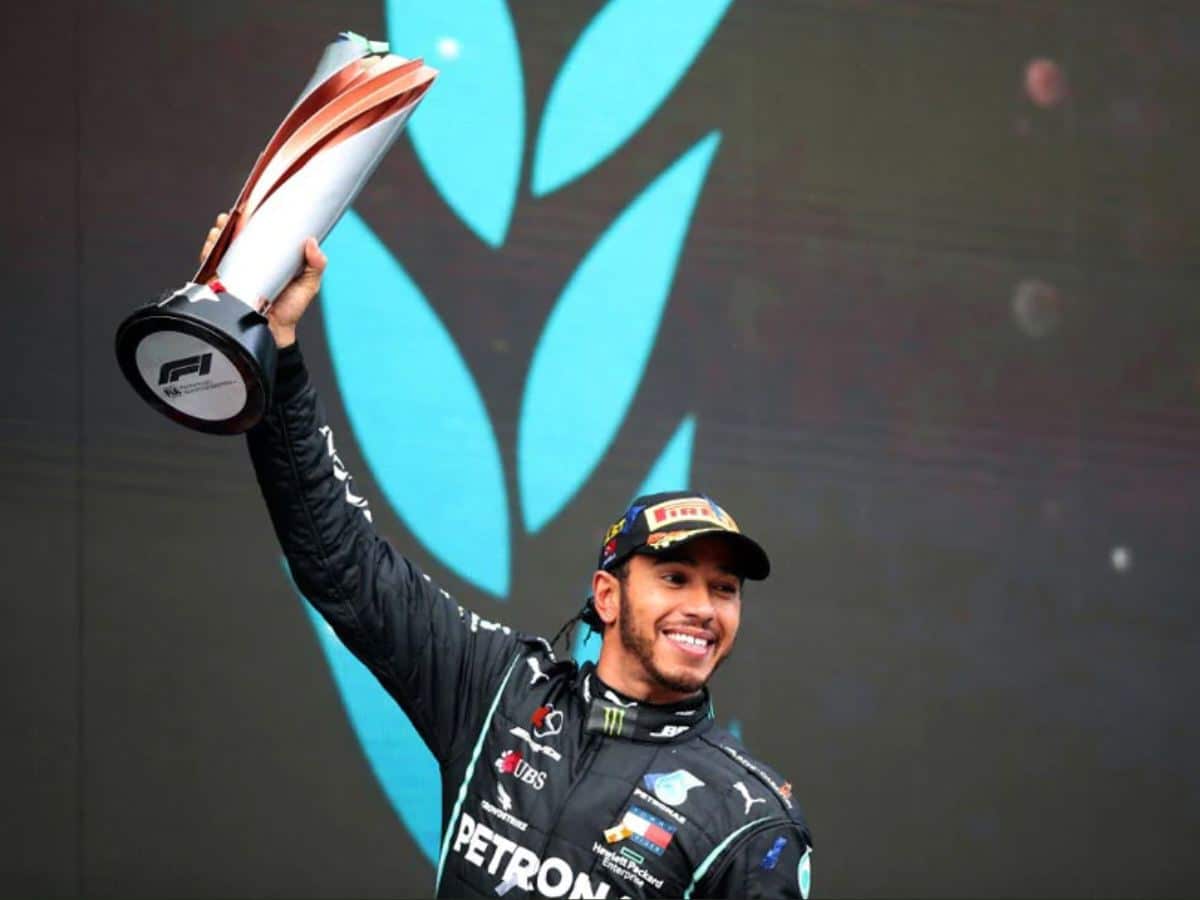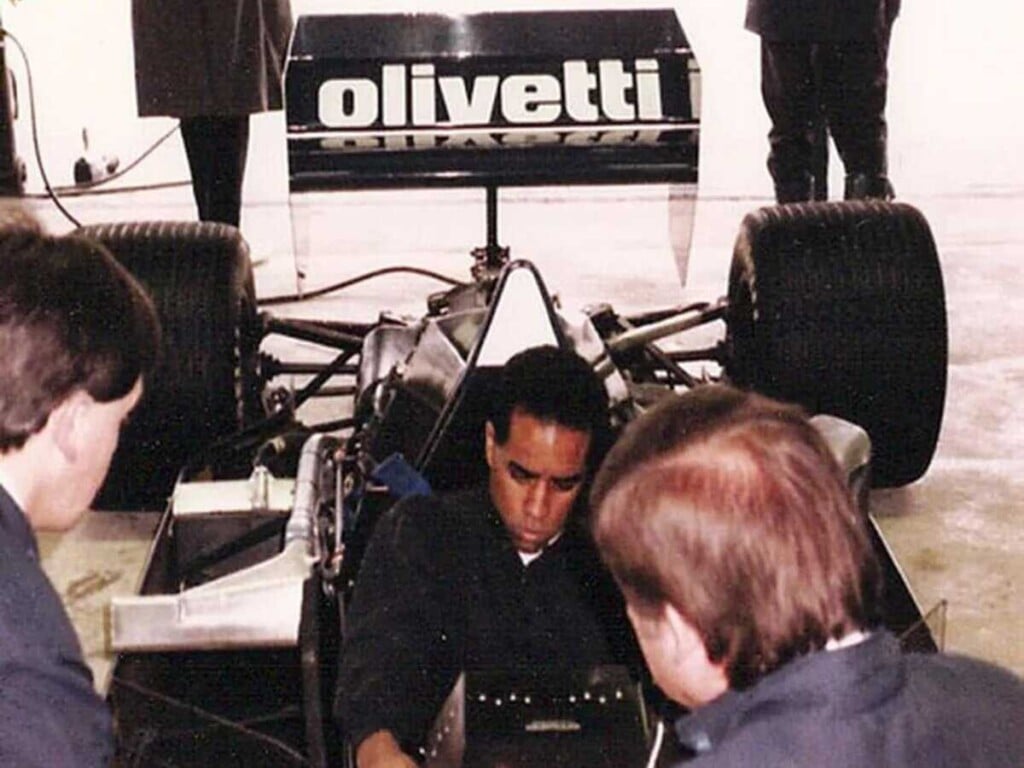Who was the first black F1 driver?
The history of black racing drivers in F1

Lewis Hamilton winning his seventh title (Credits: NDTV)
🔍 Explore this post with:
Formula 1 isn’t known for its diversity in the paddock, like many of the Premier Motorracing Championships around the globe. Motorsports is a costly venture that demands big financial investment in athletes from a young age. Investment in drivers is a big risk as the opportunities to shine at the premier division are limited. This constrains the financially less fortunate aspirants to quit. Historically racial minorities, who were often the most unfortunate in the financial spectrum, stayed away from F1, and the discriminating past of the sport also played its part. Among the racial minorities, drivers of African descent or black drivers are the most underrepresented.
Only two Black drivers have ever come close to F1, though only one of them has actually succeeded at the premier division. William T. Ribbs was the pioneer Black F1 driver. He first black driver to test an F1 car. He drove for Bernie Ecclestone’s Brabham team in 1986 at Estoril. He was also the first black person to drive a Formula 1 car. However, he did not compete in an official F1 race. The first black driver to compete and win a Formula One Motorsport Race was Lewis Hamilton in 2007. Hamilton went on to become one of the greatest ever in the sport and, statically, the all-time greatest.
Discover: How many F1 championships does Lewis Hamilton have?
Who is William T. Ribbs, the Black F1 driver pioneer?

Willy T. Ribbs made history in 1986 as the first black driver to test a Formula One car. The test took place at the Estoril circuit in Portugal, driving for the Brabham team owned by Bernie Ecclestone. Although Ribbs had a successful test at the Autódromo Internacional do Estoril, he never received an offer of a contract, and, therefore, did not get the opportunity to compete in an official F1 race. Despite this setback, Ribbs’ achievement paved the way for other black drivers to follow in his footsteps.
Ribbs’ career was not without its challenges. He faced financial difficulties, and racism within the sport presented further obstacles. However, Ribbs continued to pursue his passion for racing, and his success in motorsports is a testament to his dedication and hard work. The Portuguese Grand Prix of 1986 was the event where Ribbs conducted his F1 test. The race was won by British driver Nigel Mansell, driving a Williams-Honda. After failing to secure a contract with Brabham, Ribbs went on to compete in three NASCAR events for DiGard Racing that year. Unfortunately, the team was unable to complete the season due to financial problems.
Aside from his F1 test, Ribbs achieved many accolades throughout his career, including being the first black person to participate in the Indianapolis 500. In addition, he has been a racing owner and a sports shooter. Ribbs’ success in motorsports has opened doors for other black drivers to pursue their dreams of racing at the highest level. Willy T. Ribbs is a pioneer in motorsports, and his impact on the sport extends beyond his achievements on the track. Despite facing numerous obstacles, Ribbs’ passion and dedication to racing have set an example for aspiring drivers and inspired a generation of black racers.
How did Lewis Hamilton, the first Black F1 driver conquer the sport?

Lewis Hamilton’s father, Anthony Hamilton, a British racing car manager born in Grenada, was instrumental in his son’s racing career, orchestrating Lewis’ ascent to Formula One in the early days. Anthony left his job as an IT manager to work as a contractor in order to fund his son’s racing career. Despite battling racism throughout his youth and professional Formula One career, Lewis has cited his father as the driving force for his success. Anthony managed Lewis’ early F1 career, following their successful time working together during Lewis’ rise into motorsports. However, they split as manager and client in 2010. Anthony’s contributions to his son’s career have been immense, providing guidance and support that helped Lewis become one of the most successful drivers in F1 history.
Lewis Hamilton began his racing career in karting at the age of eight. He won the British karting championship (cadet class) and STP karting championship when he was ten years old. In 1998, at the age of 13, Hamilton joined the McLaren young driver program. He continued to race karts and moved up to car racing in 2001, competing in the British Formula Renault Winter Series. Hamilton won the championship in his debut season and went on to win the main series in 2003. He then progressed to Formula Three and won the championship in 2005. Lewis’s success in the junior categories led to his entry into GP2 in 2006, driving for ART Grand Prix. Hamilton won the championship in his debut season, with five wins and 11 podiums. His performance in GP2 caught the attention of Formula One teams, and he was signed by McLaren-Mercedes as a driver for the 2007 season.
Lewis Hamilton’s debut season in Formula One was nothing short of remarkable. He achieved four wins and a record-breaking six podium finishes in his first nine races, becoming the first rookie to lead the championship standings since 1950. He narrowly missed out on the championship title, finishing as runner-up to Ferrari’s Kimi Raikkonen. Hamilton’s first Formula One win came on June 10, 2007, at the Canadian Grand Prix, making him the first driver to compete in an official F1 race. He was paired with Fernando Alonso, the reigning champion for the 2007 season, but despite his inexperience, Hamilton demonstrated clinical performances. He emerged as a championship contender and was only one point away from winning the championship in his debut season.
In the following season, Lewis was determined to come back stronger and compete for the championship title. He engaged in a thrilling and close championship battle with Felippe Massa, ultimately making history by becoming the first-ever black person to win a Formula One championship. His achievement was a groundbreaking moment in the sport and a testament to his talent and hard work. Overall, Lewis Hamilton’s incredible rookie campaign and championship win cemented his position as one of the greatest drivers in the history of the sport.
He went on to become one of the most successful drivers in the history of motorsport and now holds the record for the most number of wins for any driver. He currently has 102 wins and poles with seven championships under his belt. In addition to his impressive record on the track, Lewis Hamilton has also been a vocal advocate for diversity and inclusivity in motorsport. He has used his platform as a high-profile driver to call for change and to raise awareness about issues related to race and discrimination. In 2020, Hamilton took a knee during the pre-race ceremonies at every Grand Prix, as a show of solidarity with the Black Lives Matter movement and a call for an end to systemic racism. He also launched the Hamilton Commission, a research project aimed at identifying the barriers that prevent young people from diverse backgrounds from entering motorsport and developing strategies to address these issues.
Hamilton has also used his influence to advocate for greater environmental sustainability in the sport, pushing for changes to reduce the carbon footprint of Formula One and promoting a more sustainable lifestyle. He has been outspoken about his own efforts to reduce his impact on the environment, adopting a plant-based diet and driving an electric car. Furthermore, Hamilton has also been critical of the human rights records of certain countries that host Formula One races, calling for the sport to take a stronger stance on these issues. He has been a vocal critic of the treatment of migrant workers in Qatar. He has spoken out against the human rights abuses in Saudi Arabia, where the country’s controversial human rights record has come under scrutiny.
Learn more:







